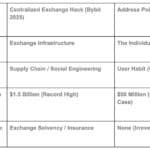(An accompanying graph to this article shows that steel industry output closely tracks global GDP output -watching steel prices can be a good indication of larger trends. Steel is also a good proxy for China which is the world's biggest steel producing and consuming nation. China has contributed more to global growth than any other country in this recent expansion. The steel ETF, SLX, has been absolutely crushed in the last 6 months falling 73%. Despite its' climb from November lows, it has fallen ~15% again in the last 10 days - AM)
By Peter Marsh
Published: December 29 2008 02:00
Financial Times
Global steel production could easily plunge by 10 per cent or more next year, with China leading the slump in output.
But although the industry is in its worst state since steel prices hit rock bottom towards the end of 2001, some industry observers believe there are a few bright spots on the horizon.
"The speed and decisiveness of the cutbacks in production [by big steelmakers] have been unprecedented, which means profitability in this downturn for the steel industry is likely to hold up better than in other comparable periods," says John Lichtenstein, head of the metals industry group at Accenture.
By controlling supply better than in previous downturns, steel companies should be in a better position to keep prices at fairly high levels - and so guard against too steep a fall in earnings, he believes.
Backing up this argument is research from Meps, a UK-based steel consultancy, which expects average prices of all steel grades sold worldwide to climb marginally over the next few months, rather than continue the steep falls that started in July.
According to Meps, average steel prices should rise to $750 a tonne by next July, from a low point of $676 a tonne seen earlier this month.
Even though the price has fallen precipitously from $1,160 a tonne in July 2008, today's steel price is still considerably above the low point of $275 a tonne seen in November 2001, which was the last time the sector was in a state of slump.
Rod Beddows, chief executive of Hatch Corporate Finance, a financial group specialising in the metals industry, reckons the steel business should be bracing itself for a "sharp" downturn "with a period of four years between the sector returning to the level of output and demand it experienced in the first half of 2008".
Matthias Hellstern, who monitors the European steel industry on behalf of Moody's, says that any upturn that comes later in 2009, perhaps around the second or third quarters, will be "extremely mild".
Mr Hellstern reckons there is a chance that global steel production will fail to return to the levels of the first half of 2008 until 2013.
On the assumption that steel production in 2008 will be slightly lower than the 1.34bn tonnes recorded in 2007, it could, according to Mr Hellstern's calculations, be more than five years before annual output sector climbs again to this level.
According to data from the London-based Iron and Steel Statistics Bureau, an industry research body, there have been only four occasions since 1900, apart from periods of world wars, when the global steel sector has taken four years or longer to climb out of a downturn by attaining the previous high point in production.
However, not all analysts are quite as downbeat as Mr Hellstern.
Peter Marcus, managing partner at World Steel Dynamics, a US consultancy, believes that output could rebound by 12.9 per cent in 2010, following a fall of 13.9 per cent in 2009, which would mean annual output returning to the level of 2007 in 2011.
Monday, December 29, 2008
Subscribe to:
Post Comments (Atom)




No comments:
Post a Comment